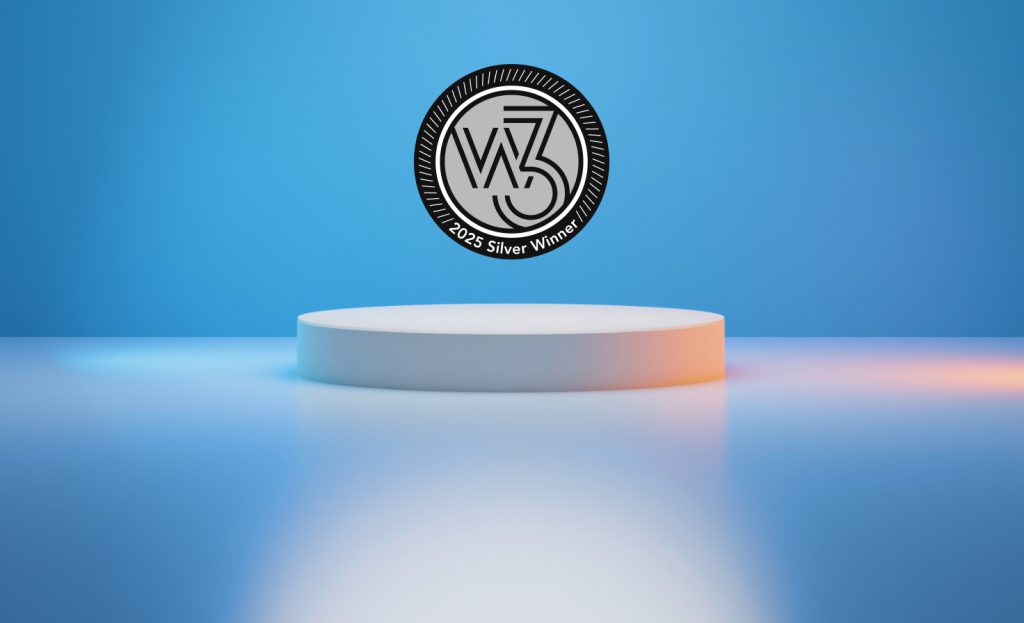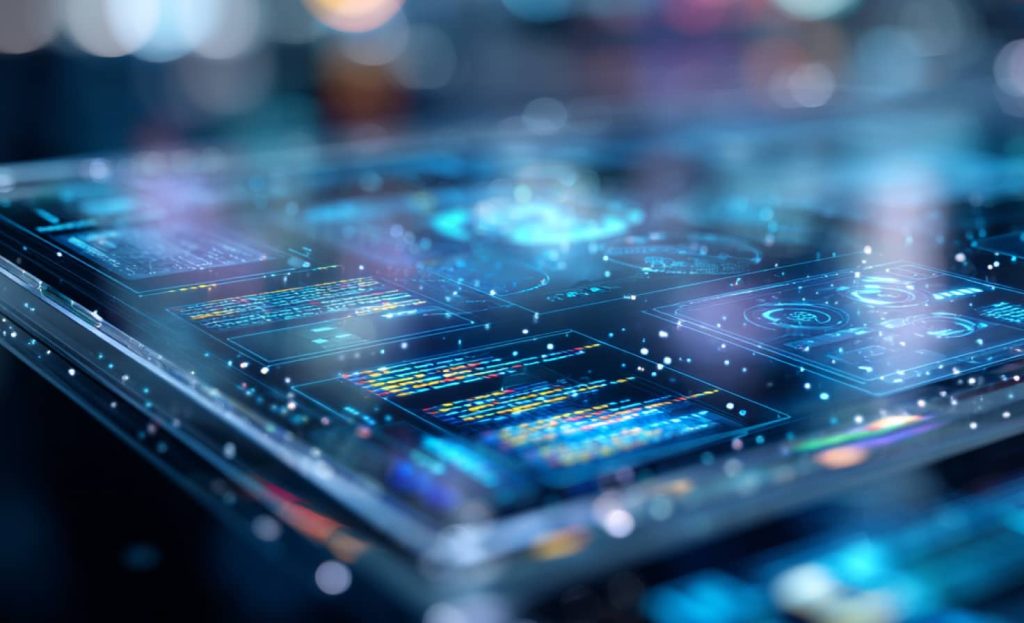
In contrast, smart grids tackle these challenges by optimising electricity flow, adjusting to real-time demands, and improving energy delivery across the system. Also, energy management software allows precise control over energy use.
In this guide, we will explore the benefits and challenges of smart grids and learn how they transform how we generate, distribute, and consume electricity.
What is a smart grid?
A smart grid is an advanced electrical network that uses information and communication technologies (ICT) to manage electricity flows in real time. It balances supply and demand, improves energy efficiency, and integrates distributed energy resources.
Core components of a smart grid include:
- Smart meters are electronic devices that record data, such as electric energy use, voltage, current, and power factor. Smart meters send this data to consumers and electricity suppliers.
- Phasor measurement units (PMUs) provide time-synchronised voltage and current measurements across the grid.
- Advanced metering infrastructure (AMI) includes smart meters, communication networks, and data management systems. It uses advanced sensors to collect, measure, and analyse energy consumption data for better grid management.
- Intelligent electronic devices (IEDs) are part of the grid's automation system. They help remotely monitor grid conditions and control grid operations.
- Distributed energy resources (DERs) are local energy sources. They include rooftop solar panels, wind turbines, and batteries. DERs reduce reliance on centralized power plants and help integrate renewable energy into the grid.
- Energy storage systems include battery energy storage systems or other storage technologies.
- Communication networks enable real-time data exchange between grid components, operators, and consumers. They include wireless and wired protocols for two-way data transfer across the grid.
These technologies are enhanced by data science solutions. They process vast amounts of grid data with predictive analytics and energy management, make the data “useable” and thus help consumers as well as grid operators in making better decisions regarding energy consumption and operations.

History and evolution of smart grids
For over 130 years, we’ve relied on the traditional electricity grids. It is a vast network of transmission and distribution lines, substations, and transformers. The electricity grid delivers electricity from power plants to homes and businesses. The system has served us well, but it was designed for a time of simpler and more predictable energy demands.
Traditional power grids work on a one-way system, where electricity flows from power plants to consumers. In contrast, smart grids allow two-way communication. They can adjust energy flow and accommodate decentralised energy sources.
The classical approaches are no longer enough to meet future demand growth. Traditional power grid systems do not have monitoring and automation capabilities. With the increasing demand for energy usage, there are hurdles in terms of the stability and efficiency of the electric grid.
From traditional to smart grids
The shift from traditional to smart grids has been ongoing for decades. It reached a key turning point in the early 2000s. This modern system connects asset owners, grid operators, utilities, manufacturers, service providers, energy providers, and government agencies. They all work together to distribute energy efficiently. Unlike the traditional power grid, the smart grid can balance power distribution, cut energy waste, and improve reliability.
Advantages of smart grid technology
Smart grids use IoT technology to create an intelligent system that improves real-time monitoring and energy management.
Real-time data enables grid operators to view the grid’s status at any time. High-tech sensors distributed across the network constantly monitor power flows, equipment performance and other parameters. Operators analyse this information using energy management software systems to detect and address issues. It also enables control functions, such as adjusting voltages, switching equipment, and automating demand response actions. Real-time communication is crucial for grid visibility, stability and control.
Smart grid balances supply and demand in real time. It allows to reduce energy waste and increase the efficiency of the grid.
For example, air conditioners use more power during a heatwave. The smart grids can redirect electricity from lower-priority areas to ensure critical areas, like hospitals or residential zones, get enough energy. The smart grid prevents system overloading and ensures a consistent power supply.
Smart grids can integrate a variety of energy sources. Not only traditional ones such as fossil fuel, coal, or natural gas can be used. Smart grids can also include renewable sources and automatically switch between them as needed.
If there is a broken transmission line or a power outage, the sensors and devices of the grid’s IoT system can inform grid operators of the need for repair work and reroute electricity or retrieve it from a different source. Thanks to smart technologies, in smart grids issues can be detected and fixed quickly.
To learn more about strengthening energy resilience, read this article: Strengthening Resilience in National Electricity Grids: Drawing from Global Insights
To sum up, smart grids can:
- Enable two-way communication between consumers and utilities for dynamic adjustments in energy use.
- Better integrate renewable energy through real-time management and energy storage systems. Thus, reducing reliance on fossil fuels.
- Provide enhanced fault detection and isolation, minimising downtime and ensuring more reliable service.
By 2029, smart electrical grids will save more than $290 billion globally. As energy production costs fall, energy will become cheaper and more accessible to all. It will create new opportunities for businesses and communities.
How smart grids work?
Smart grids use IoT technology. They create a new, intelligent model that integrates monitoring. IoT-enabled devices, like smart meters and sensors, are on the grid. They monitor energy use, grid conditions, and power systems performance. These devices provide real-time data from homes, businesses, substations, and transmission lines, creating a comprehensive view of grid activity. This monitoring capability is key to detecting inefficiencies and responding to issues quickly.
Smart meters are key to smart grids. They collect detailed energy use data from individual users. They also provide insights into usage patterns, peak demand times, and energy-saving opportunities. Utilities use this info to optimise grid operations and forecast energy needs. They also design strategies for managing energy demand. Smart meters let consumers track their electricity use. This encourages energy efficiency.
IoT devices enable two-way communication across the grid. Traditional systems lack this feature. This communication lets distributed grid components coordinate and balance supply and demand. For example, if demand spikes in one area, the grid can reroute electricity from lower-demand areas. It can also deploy stored energy from batteries to meet the need.
Smart grids can autonomously adjust to sudden changes in energy demand. During peak times, they can signal appliances or electric vehicle chargers to pause or delay usage to prevent strain on the system. If demand drops, they may reduce the output of generators to avoid wasting energy.
Digital technologies like AI and machine learning are crucial in smart grid operations. These tools process the massive amounts of data collected by IoT devices to:
- Predict energy demand based on factors like weather, time of day, and historical usage.
- Streamline the flow of electricity to avoid bottlenecks or overloading.
- Detect potential equipment failures early and schedule maintenance to prevent disruptions even during extreme weather events.
- This level of optimisation not only reduces energy waste but also integrates renewable energy sources effectively.
Challenges and concerns in building smart grids
Cybersecurity threats to smart grids
The benefits of smart grids are clear, but they also bring new challenges. Smart grids rely on digital technology and interconnected systems, making them vulnerable to cyberattacks.
- Among the main cyber threats to smart grids are:
-
- Jamming attacks aim to disrupt data transmission and reception.
- Spoofing is when a fake node pretends to be a legitimate one and tries to compromise the system.
- Flooding attacks overload the system and consume network resources, causing a crash.
- Man-in-the-middle attacks refer to someone intercepting or modifying the data sent between two parties.
- Social engineering attacks trick people into revealing confidential information such as access tokens or passwords.
It is a continuous technological challenge to guarantee the cybersecurity of the electricity infrastructure and the safety of the grid's data and operations against attacks.
Cost and complexity of implementing
The technical aspects of the digital transformation of the power grid to a smart grid can be daunting. Many regions still rely on ageing infrastructure that may not be compatible with new technologies. Retrofitting or replacing this infrastructure requires careful planning and significant investment.
Besides technical challenges, the implementation of smart grid technology involves high costs. Utilities must upgrade old infrastructure.
Debate on the necessity of smart grids
Some experts argue that the smart grid may not be necessary for all areas. In places with stable, predictable energy needs, traditional grids may still work. Of course, smart grids have advanced digital technologies and features. However, they may not justify their high costs in areas where the traditional grid is enough.
Justification of smart grid investment
Utilities need to show that investing in a smart grid makes financial sense. It’s quite hard to measure these advantages in financial terms. However, smart grids have long-term benefits as they are more efficient and reliable in the long run.
Expensive and complex components
Costly, complex components hinder smart grid adoption. Smart appliances include smart meters, phasor measurement units (PMUs), advanced metering infrastructure (AMI), intelligent electronic devices (IEDs), distributed energy resources (DERs), energy management systems (EMS), communication networks, grid automation technologies, demand response systems, and energy storage systems.
They are vital for grid stability and for integrating renewables. They have high upfront costs and need expert installation and skilled labour. However, these components are long-lasting investments. With the support of sustainability consulting, they will ensure a strong, efficient, and sustainable energy future for generations.

Successful smart grid deployments
At least 15 countries worldwide have begun to deploy smart grid solutions. The earliest and one of the largest examples of a smart grid is the Italian system installed by ENEL. Completed in 2005, the Telegestore project was unusual for a utility. The company designed and made its meters, acted as its own systems integrator, and developed its software. It remains a success, delivering annual cost savings of ~€500m (versus an original build cost of ~€2.1bn).
The U.S. Department of Energy's Smart Grid Program, funded by the 2009 American Recovery and Reinvestment Act (ARRA), spent over $9 billion to modernise the electrical grid. The program aimed to improve the grid's reliability, efficiency, and security. It would use advanced technologies to cut energy waste, boost renewables, and create jobs in the energy sector to grow the economy. The funding supported various projects. These included upgrades to substations, transmission lines, and grid management systems. They made the grid more efficient, resilient, and advanced.
The eEnergy Vermont consortium is a U.S. initiative. It aims to speed up the adoption of smart grid technologies in Vermont. The consortium unites the state's electric utilities to develop and deploy advanced grid systems. A key goal of eEnergy Vermont is to test and apply dynamic rate structures. These adjust electricity rates based on real-time demand and supply. This can encourage consumers to use energy more efficiently. It can reduce peak demand and support renewable energy integration. The initiative is part of Vermont's effort to modernise its energy infrastructure and give consumers more control over their energy use.
Emerging trends and opportunities
Adopting smart grid technologies is a continuous journey, and ongoing research and development efforts are shaping the future of power delivery.
Next-gen transmission and distribution for bidirectional flow
In the future, energy systems will be very different from the traditional ones we use today. Next-generation transmission and distribution systems are designed for bidirectional energy flow. Unlike traditional grids, which only send electricity one way, these systems can handle energy moving both ways. This is vital for integrating local renewable energy, like solar and wind, and Distributed Energy Resources (DER). It also supports electric vehicle charging, boosting grid efficiency and stability.
Optimised energy infrastructure
The smart grid aims to enhance energy infrastructure and reduce transmission and distribution losses. It enhances grid infrastructure for future demand growth. Thanks to advanced technologies, smart grids direct energy effectively across the grid. Thus, less power is wasted during transmission and distribution.
Smart grid modelling
Smart grid modelling is a way to improve how power grids operate. They can be modelled using complex systems, including Markov processes and neural networks.
- Markov processes model and predict changes in grid conditions, which makes them especially useful for managing renewable energy sources. They help ensure that energy supply meets demand, even when the wind isn't blowing or the sun isn't shining.
- Neural networks are a type of artificial intelligence that can learn patterns in data. In smart grids, they help predict energy demand by looking at factors like time of day, weather, and past consumption. They can also help detect faults and improve decision-making when managing energy supply.
Peak demand and power consumption optimisation
Implementing smart grids for the future brings optimised energy consumption and reduced peak demand. Peak load is the highest electricity demand a system must handle. It is a key design metric for current and future infrastructure. As electricity demand fluctuates throughout the day and year, energy systems must be ready to meet this peak load at all times. This includes generation, transmission, and distribution. Smart grids are designed to manage these fluctuations and energy consumption.
Smart grid investments for Net Zero by 2050
The Net Zero Emissions by 2050 Scenario (NZE Scenario) describes a plan for the global energy sector to reach net zero CO2 emissions by 2050. Advanced economies aim to achieve this goal earlier than others. Many countries are upgrading their infrastructure to support digitalisation.
Several major economies are allocating large funds to modernise and digitise electricity grids.
- The European Union plans to invest €584 billion (US$650 billion) in its electricity grid by 2030.
- China will invest US$442 billion in its grid from 2021 to 2025.
- Japan plans to spend US$155 billion.
- India has earmarked INR 3.03 trillion (US$28 billion). The US launched the $10.5 billion Grid Resilience Innovative Partnership program in North America in 2022.
- Canada is investing US$100 million in its smart grid program.
Despite these efforts, smart grid investments must more than double by 2030. This is especially true in emerging markets and developing economies to stay on track with the NZE Scenario.
Summary
Smart grids as an integral part of a low-carbon future
The energy industry accounts for around 35% of global greenhouse gas emissions. Thanks to better energy management and increased use of renewable energy, smart grids help reduce greenhouse gas emissions. These technological advancements are key to achieving a low-carbon future.
Reducing energy waste and improving grid efficiency
One of the standout benefits of smart grids is their ability to minimise energy waste. Traditional grids can lose up to 8% of generated energy during transmission and distribution. Still, smart grids use advanced metering and real-time analytics to optimise the flow of electricity, ensuring more efficient delivery and electricity consumption.
Renewable energy integration
Smart grids help bring renewable energy sources, like solar and wind, into the power grid. These energy sources can be unpredictable because solar power depends on the sun, and wind power depends on the wind. Smart grids use advanced tech to track energy use and adjust in real-time. This keeps the grid stable and reliable, even with varying renewable energy. Also, in this way, our reliance on traditional power sources is reduced.
Enhancing grid resilience and reliability
Smart grids enhance the system reliability and resilience of the power grid. With real-time data and automated responses, they can minimise outages and restore power more swiftly. That is why the grid becomes more robust in the face of natural disasters and other challenges, as it cares about the energy resilience of the whole supply system.
Tackling decarbonisation challenges
Summarising everything above, smart grids are an important part of a global effort to cut emissions and decarbonise energy systems.
Smart grids empower consumers and give them control over their own energy consumption and systems. They also conserve energy by optimising usage and integrating renewable sources effectively.
Smart grids are not just an upgrade to existing energy systems. They are key to a sustainable, efficient, and resilient energy future. They will help speed the shift to cleaner energy and a low-carbon world.

FAQs
A smart grid is an advanced, digital electricity network. It uses tech and two-way communication to manage energy supply and demand.
The smart meter is an example of a smart grid device. It provides detailed information on electricity consumption.
Real-time data and analytics, improved grid reliability and resilience, and integration of different energy resources.
A power grid distributes electricity from producers to consumers, but it lacks advanced features for energy management. In contrast, a smart grid integrates control systems to optimise electricity flow, enhance energy conservation, and provide real-time insights for both utilities and consumers.
Smart grids represent the application of IoT technology in the energy sector.
A smart grid features advanced meters, renewable energy integration, and control systems for real-time management. These are key areas of smart grid research to improve efficiency and reliability.
The Electric Power Research Institute (EPRI) was awarded a $5 million grant from the U.S. Department of Energy (DOE) to improve emergency electric grid resilience and the nation's electricity transmission lines.
Related Insights








The breadth of knowledge and understanding that ELEKS has within its walls allows us to leverage that expertise to make superior deliverables for our customers. When you work with ELEKS, you are working with the top 1% of the aptitude and engineering excellence of the whole country.

Right from the start, we really liked ELEKS’ commitment and engagement. They came to us with their best people to try to understand our context, our business idea, and developed the first prototype with us. They were very professional and very customer oriented. I think, without ELEKS it probably would not have been possible to have such a successful product in such a short period of time.

ELEKS has been involved in the development of a number of our consumer-facing websites and mobile applications that allow our customers to easily track their shipments, get the information they need as well as stay in touch with us. We’ve appreciated the level of ELEKS’ expertise, responsiveness and attention to details.

